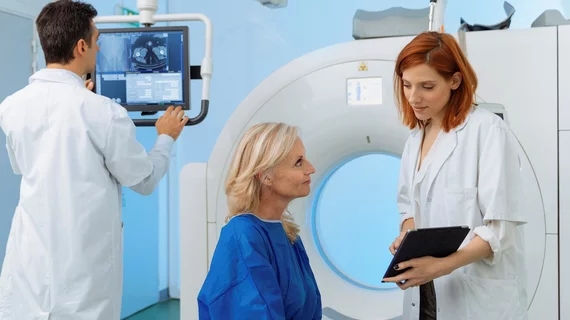Bolus tracking with individualized delays for abdominal multiphase CT beats fixed delay protocols
Tracking a bolus with an individualized post-trigger delay during multiphase abdominal CT scans provides better overall image quality compared to fixed post-trigger protocols, new research published recently in the European Journal of Radiology suggests.
When done correctly, abdominal contrast-enhanced CT (CECT) provides invaluable diagnostic information of a patient's anatomy. Currently, bolus tracking is the most commonly used method in determining scan times in CT images, though it does have its constraints.
“Current bolus tracking technology still has limitations due to the fixed delay before the start of the scan. One of the main drawbacks is that the technique does not take the impact of patient-specific cardiac output into account,” corresponding author, Jianbo Gao, with the Department of Radiology at the First Affiliated Hospital of Zhengzhou University, and co-authors explained.
For example, low cardiac output could result in premature image collection, which would consequently stop before peak arterial enhancement.
Researchers hypothesized that an individualized approach to bolus timing might yield better results.
To test this theory, they did a side-by-side comparison of 104 patients who underwent multiphase abdominal CT scans using either an individualized approach (group A) for the bolus tracking, or a fixed 11 second delay (group B). The researchers noted that the individualized delays ranged from 14 to 20 seconds. These groups were divided evenly.
Higher attenuation during the arterial phase (AP) was noted for group A. Additionally, during AP the contrast-to-noise ratios (CNRs) of the liver, pancreas and portal vein in group A were much higher than the numbers noted in group B. The differences between venous phase compared to arterial phase between the two groups were not statistically significant.
“When using standard injection rates and amount of contrast agents, the attenuation value of blood vessels and solid organs significantly exceeded that of group B despite significantly longer delay times,” the experts said. “This suggested that the potential for vascular and organ enhancement by applying contrast agents was underutilized in standard injection schemes that use fixed post-trigger delay.”
While this research is positive, the experts note the work is not yet done. They believe the individualized technique could also reduce the iodinated contrast agent burden in multiphase CT scans, and they signal that studying this will be the next step.

